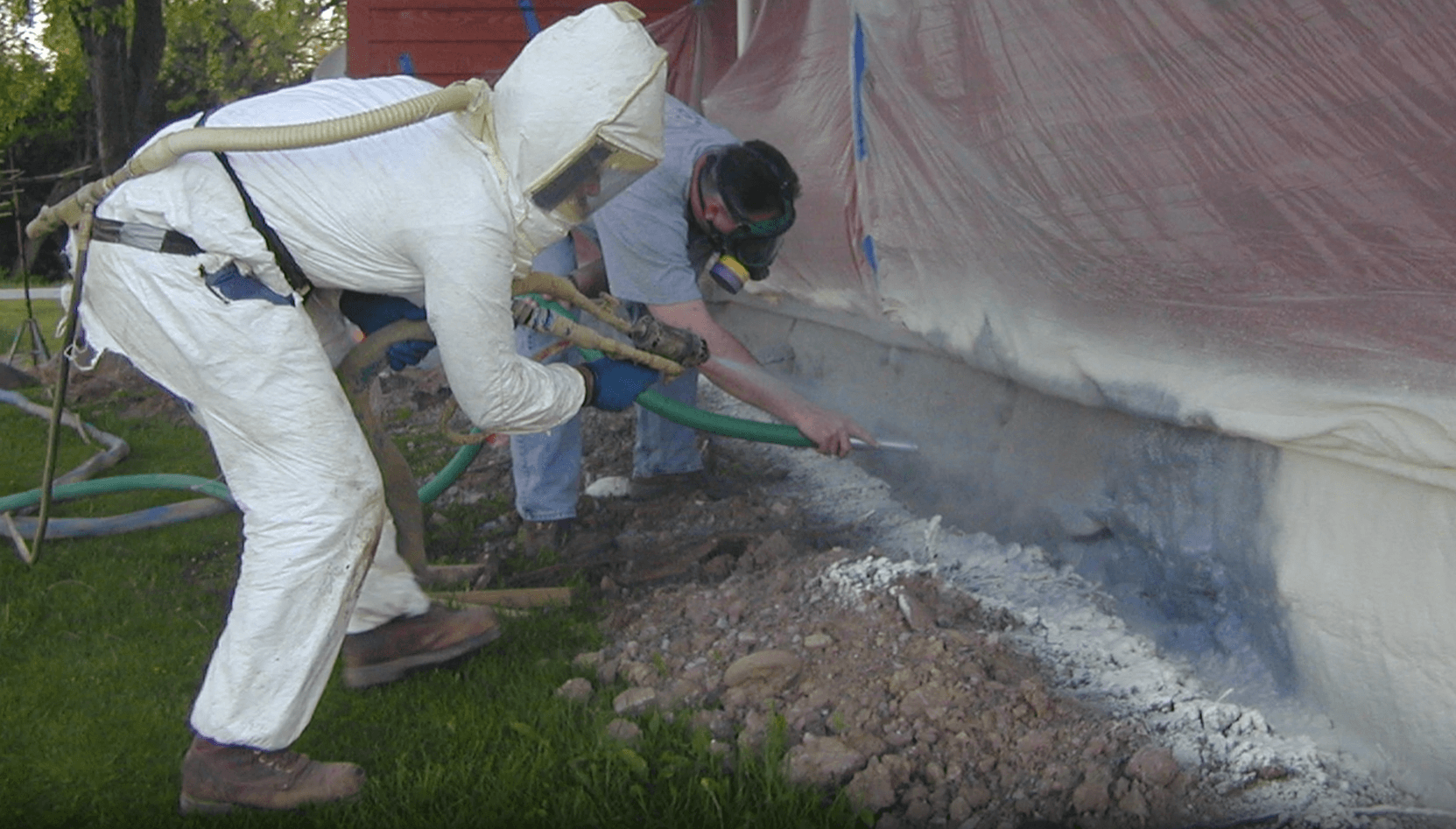Spray Foam Insulation Spraying Techniques

Spray foam insulation has revolutionized the construction industry with its exceptional thermal properties and versatility. As an applicator or contractor, mastering the techniques for applying spray foam can significantly enhance your efficiency and the quality of your work.
In this guide, we’ll delve into various application techniques and offer our best tips for achieving optimal results.
Spray Foam Application Basics
Before diving into techniques, let’s briefly review the basics of spray foam insulation.
Types of Spray Foam
There are two main types of spray foam insulation: open-cell and closed-cell.
- Open-Cell Foam: Known for its flexibility and affordability, open-cell foam expands rapidly after application, forming a porous structure that provides excellent soundproofing and air sealing properties.
- Closed-Cell Foam: Characterized by its density and rigid structure, closed-cell foam expands slower but offers superior insulation and moisture barrier capabilities. It’s ideal for areas requiring high strength and resistance to moisture ingress.
At Oak Ridge Foam & Coating Systems, Inc. we offer a variety of foam insulation options, including open-cell foam, closed-cell foam, roofing foam, concrete lifting foam, molding foam, and more.
Spray Gun Handling
Maintain a steady hand and move the spray gun smoothly, ensuring even distribution of foam across the surface. Proper handling of the spray gun is crucial for achieving consistent coverage and avoiding overspray.
Spray Patterns
Experiment with fan width and flow rate settings to achieve the desired coverage and thickness. Adjusting the spray pattern of the gun enables you to tailor the application to different surfaces, sizes, and project requirements.
Vertical Application
When spraying vertically, we recommend you use 01 or 02 size tip. Start from the bottom and work your way up with steady even strokes.
“Spray faster and further away from the substrate so the foam doesn’t drip.” — Jed Stellmacher, owner of Oak Ridge Foam & Coating Systems, Inc.
With open-cell foam, one pass from the bottom up can often fill cavities evenly and consistently, helping you get the job done quickly.

With closed-cell foam, there’s less expansion, so it’ll take multiple passes. Start from the bottom and work your way up slowly and steadily, then down and up again in an overlapping pattern until you fill the space.

Horizontal Application
For horizontal applications, move the gun in a consistent back-and-forth motion. Again, start at the bottom and work your way toward the top.
“Again, use a 01 or 02 size tip. You should spray slower and closer to the substrate during horizontal applications.” — Jed Stellmacher, owner of Oak Ridge Foam & Coating Systems, Inc.
Since open-cell expands faster, you can make quicker back and forth motions. Closed-cell foam requires a slower pace to ensure full, even coverage.

Picture Framing Application
As the name suggests, the picture frame application approach involves going around the edges of the area you want to fill. This technique is for beginner sprayers and works best if you underfill a little bit.
Frame the area first, then start at the bottom and go up the center to tightly fill the space.
“Spray the inside perimeter of the stud, then spray either horizontal or vertical to fill the remainder of the space within the stud,” — Jed Stellmacher, owner of Oak Ridge Foam & Coating Systems, Inc.
Sometimes, you might fill the area first, then use the framing technique to provide an extra tight seal.

Tips for Spray Foam Success
Once you have the techniques down, here are a few other tips to ensure a seamless and successful spray foam application.
Pay Attention to Temperature
Aim to work in moderate conditions to optimize curing time and adhesion. Environmental factors, such as temperature and humidity, can influence the performance of spray foam.
- Adjust schedules to avoid extreme heat or cold periods, or implement temporary climate control measures such as heaters or fans to maintain moderate conditions.
- Preheating or cooling the substrate can help optimize foam expansion and adhesion, especially in extreme weather conditions.
- Monitor temperatures and humidity throughout the process and make adjustments as needed to optimize foam performance and adhesion.
Prepare Your Surfaces
Properly clean and prepare the substrate before applying spray foam to promote adhesion and prevent contamination.
- Ensure the surface is free from debris like dust, dirt, grease, or other contaminants.
- Address any surface imperfections or damage, such as cracks, gaps, or uneven areas and patch as needed to create a smooth and uniform substrate.
- Shield adjacent surfaces or areas where overspray may occur to prevent unintentional adhesion or contamination.
Keep Safety Top of Mind
Use PPE and ensure the space is properly ventilated to keep yourself, your employees, and your customers as safe as possible.
- Always wear appropriate personal protective equipment (PPE), including goggles, gloves, and respiratory protection when working with spray foam.
- Use exhaust fans or open windows and doors to maintain a healthy indoor environment during and after application.
- Have an emergency response plan in place, including access to first aid supplies, eyewash stations, and emergency contact information.
Practice and Training are Important
Before starting a spray foam business, invest time in training and practice to hone your skills and familiarize yourself with different spray foam products and equipment.
- Complete our training program, where we cover different techniques and equipment to get you started.
- Attend conferences, seminars, or webinars, and engage with industry experts to expand your knowledge base and stay up to date with industry developments.
Follow Manufacturer Guidelines
Adhere to the manufacturer’s instructions regarding mixing ratios, application techniques, and safety precautions to ensure optimal performance and product warranty compliance.
- Thoroughly review the manufacturer’s product data sheets, technical specifications, and application guidelines before starting any project.
- If you’re unsure, consult with our team or the manufacturer to make sure spray foam products are compatible with the project requirements and environmental conditions.
Partner with Oak Ridge
Mastering spray foam insulation application requires a combination of skill, knowledge, and attention to detail. Our team of experts is here to help with ongoing training and the latest spray foam and application equipment.
We work with contractors and spray foam applicators all across the United States. Contact us today to get started.
